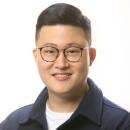
- Share via
SEOUL — Dressed in borrowed camouflage fatigues, they fumbled with their ammunition belts and K2 assault rifles. Some had white hair and a slow, shuffling gait; their average age was 63, the oldest 75.
It was the most unconventional batch of trainees that the 52nd Infantry Division’s Seocho Reserve Forces Training Center had ever seen, and Lt. Col. Hwang Hyeon-seok received them with a strained smile, desperately hoping that none of them would get hurt.
“I couldn’t sleep at all last night,” Hwang told one of them with a nervous laugh. “Your enthusiasm worries me.”
His concern was met with good-natured chuckles, but no reassurances.
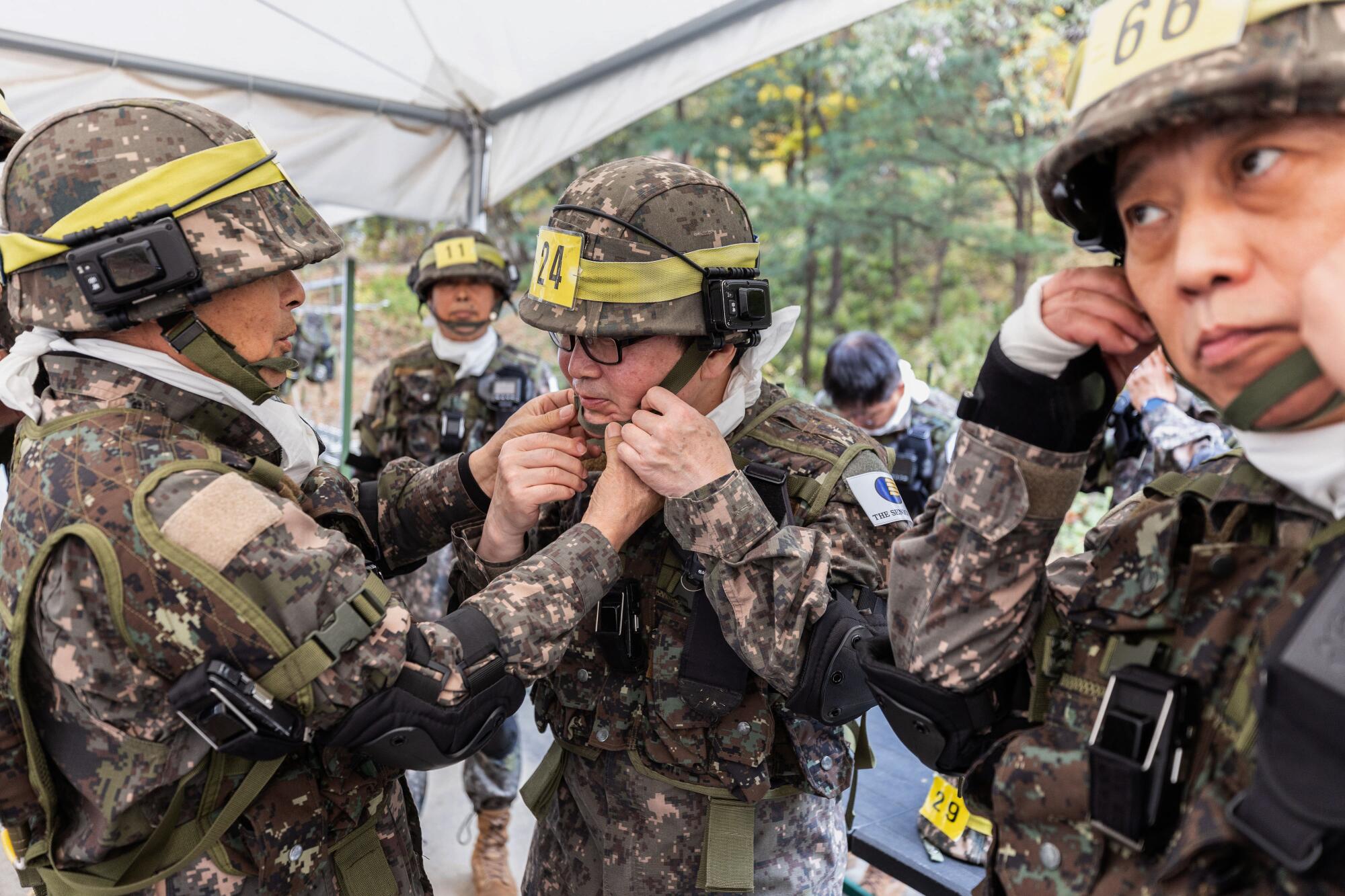
Excluding the two women in the group, most of these retirees or near-retirees had undergone South Korea’s compulsory military service in their youth. But the decades of rust were showing.
“I don’t remember the rifles being so heavy,” said 62-year-old Kang Shin-kwang.
As a young conscript four decades ago, Kang was a machine gunner stationed near the border with North Korea. But today, as the sticker on the right chest area of his shirt indicates, he serves in the Senior Army.
Founded in the summer by a group of civilians with no affiliation with the military, the Senior Army — which has about 500 members — is part senior citizens’ social club and part volunteer organization.
But it also has more profound ambitions as a solution to the effects of South Korea’s dismal fertility rate, which, as the lowest in the world, has spurred fears that the military will soon struggle to fill its ranks.
With the Senior Army assembled behind him in military formation, co-founder Choi Young-jin, a 62-year-old university politics professor, recited the group’s oath:
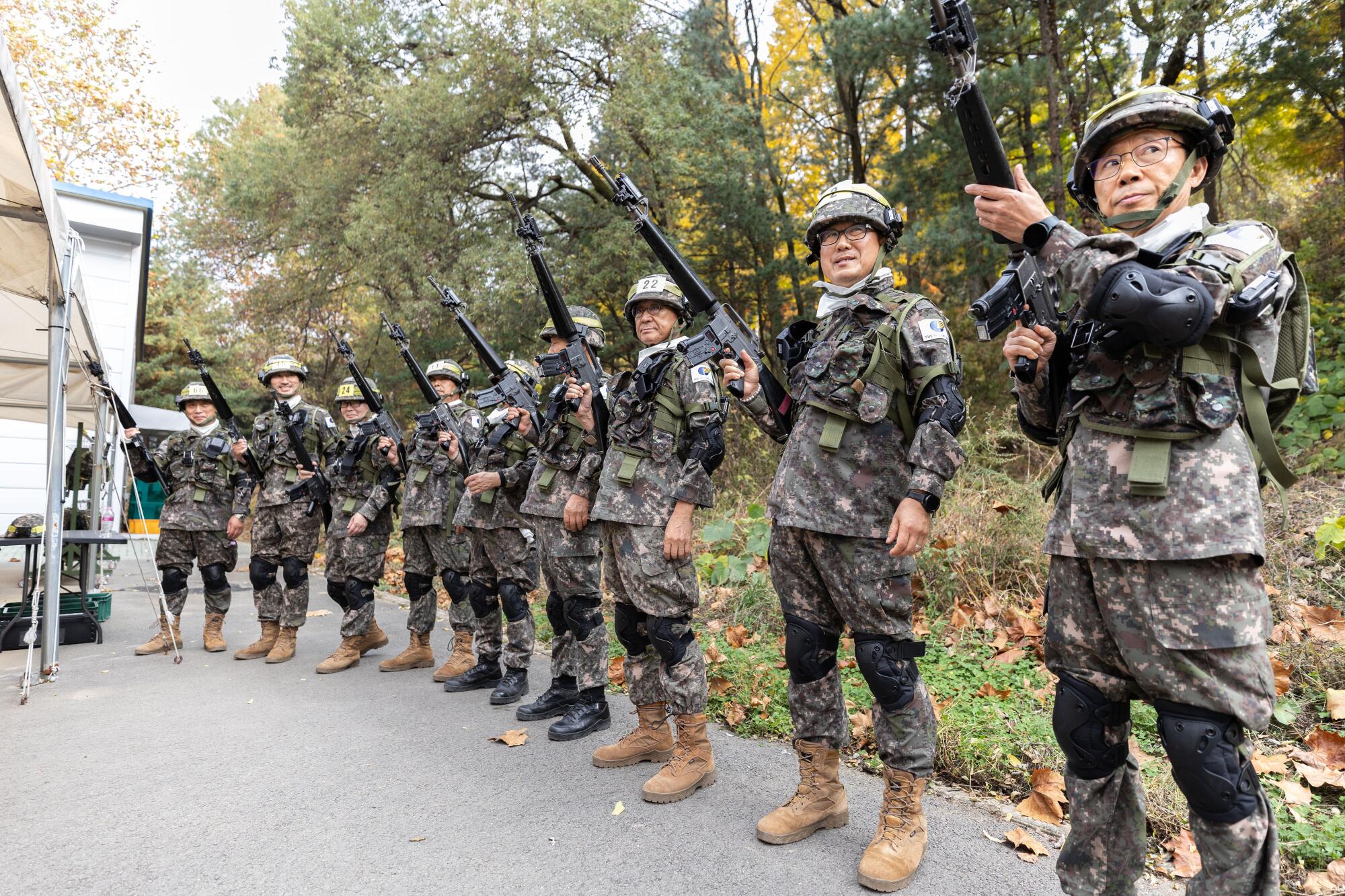
In light of the country’s population crisis, we will prepare ourselves so that we may one day be of service in the nation’s military reserves.
A gimmick this was not. After taking out personal injury insurance policies for its members, the group had asked the military for the full package: two nights in the barracks and live-fire shooting drills.
“I’m not interested in training just for show,” said 63-year-old Kim Seok-beom, who recently retired from the railroad industry. “I want real-life applicability.”
But both of these requests had been denied, and the military had limited the number of participants to 20.
Lt. Col. Hwang’s team had arranged for two exercises instead: urban warfare and marksmanship, in the center’s virtual-reality shooting range.
In the urban warfare exercise, two teams — Team Yellow and Team Blue — would battle for control of a mock city street, using rifles that shot digital bullets. The body armor, outfitted with laser sensors, would beep when its wearer was shot.
The combat simulation is a standard part of actual reserves training, designed to teach the kind of team-based tactics required in South Korea’s densely populated urban areas.
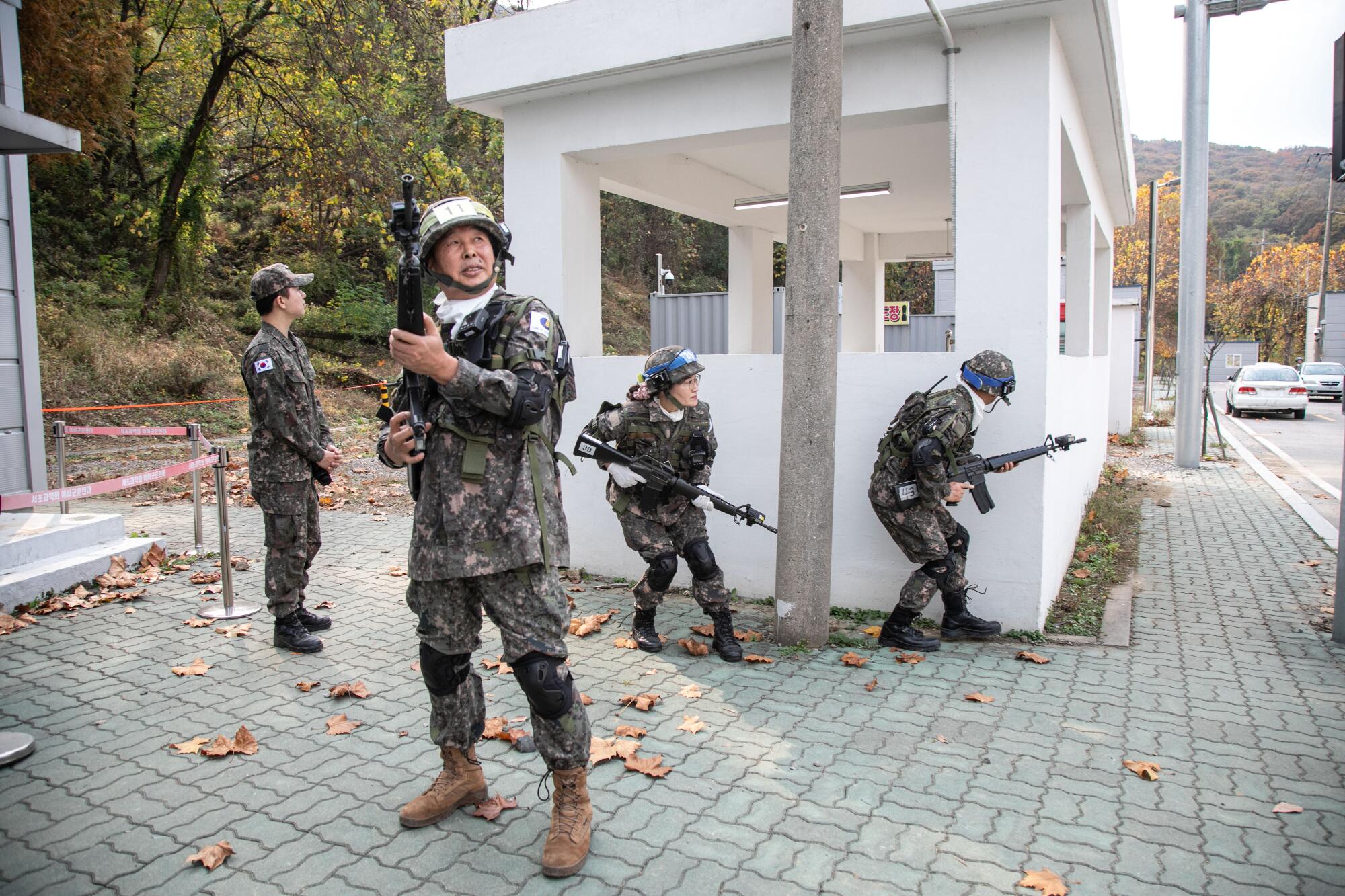
Outside the urban warfare arena, the instructor handing out knee and elbow pads repeated a plea for caution.
“Please do not overexert yourselves!” she shouted. “And remember to reach out to an instructor if any of you feel unwell.”
The 1953 armistice agreement between the U.S.- led United Nations Command and North Korea brought a cease-fire — but not an official end — to the Korean War.
In the 70-year-long standoff that followed, a delicate equilibrium has held.
North Korea, in addition to its nuclear weapons program, fields one of the world’s largest standing armies, with 1.3 million active-duty soldiers and 7.6 million reservists.
South Korea has one of the most powerful conventional militaries in the world, exporting billions of dollars in tanks, missiles and fighter jets to countries all over — Poland, India, the United Arab Emirates.
But South Korea’s fertility crisis is now complicating its military prowess.
Under current law, all able-bodied South Korean men are required to serve in the military for a period of 18 to 21 months, depending on the branch.
But with South Korean women now giving birth to just 0.78 children over their lifetimes — far short of the 2.1 needed to maintain the current population — the military will soon find itself short on conscripts.
By 2040, according to the Korea Institute for Defense Analyses, a government think tank, the country’s active-duty force will shrink from 500,000 to 360,000, its reserve force from 3.1 million to 1.6 million.
The military hopes to offset these personnel shortages with technological advancements in robotics, autonomous vehicles and artificial intelligence-based combat systems, according to a Defense Ministry white paper published last year.
When reached for comment by The Times, the Defense Ministry declined to elaborate on these plans, but stated that recruiting the elderly was not among them.
It had approved the Senior Army’s training exercises, a spokesperson said, only “to promote diverse expressions of patriotism.”
As Team Yellow and Team Blue steeled themselves for battle, the instructors explained that the team that racked up the most kills in five minutes would win. In a small bunker at the end of the fake street, Choi rallied Team Yellow to talk strategy.
Neither the military’s flat-out dismissal nor the fretting of the instructors has discouraged the Senior Army.
Their pitch to the government is simple: Even as the military seeks to reduce its reliance on human soldiers, there is no war effort that doesn’t need bodies. They can be the ones to supply them.
“Older South Koreans these days are very fit because they pass the time with hobbies like hiking,” Choi said. “In any case, the soldiers sent to the front in a war are essentially bullet sponges. As long as we are trained and ready, there is no reason we can’t do that just as well.”
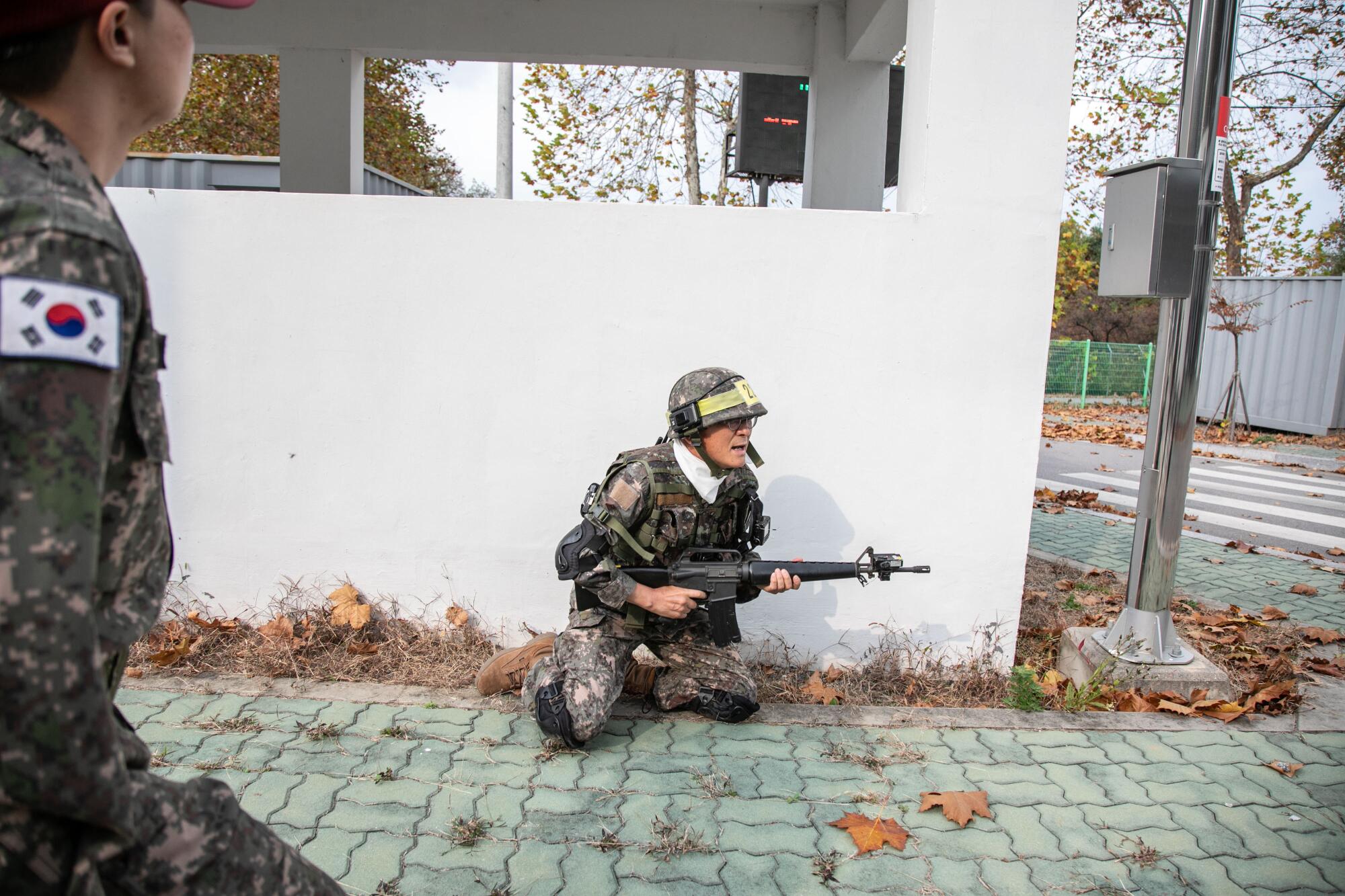
Waistlines in the Senior Army, for the most part, were trim. And what they lacked in explosive athleticism they made up for with a weathered and time-tested hardiness.
In the bunker, a suggestion that Team Yellow zigzag toward the enemy was swiftly rejected — they would advance in a straight line instead, using the buildings as cover.
“Whoever is a good shot and has trouble running should stay up in the sniper’s nest upstairs,” Choi said.
He was interrupted by an instructor, who informed him that the damp stairs were a slipping risk and therefore off-limits.
Other concessions had been made as well. Normally, a smoke grenade would be set off in the middle of the street to lend an additional layer of realism.
“We’re not doing that today because of potential respiratory issues,” said one of Lt. Col Hwang’s deputies. Behind him stood an ambulance the military had put on standby, its lights silently flashing.
On the battlefield, Team Yellow’s strategy quickly fell apart. They had made it halfway up the street, only to be caught off guard by Team Blue, which had decided to aggressively blitz them.
Choi picked off two from a prone position in the grass, his rifle vibrating every time it registered a hit. He then performed a combat roll that brought him face to face with a Team Blue player, who shot him point-blank in the chest.
“Am I dead?” Choi asked. His vest beeped yes.
His shooter moved in on his teammate next.
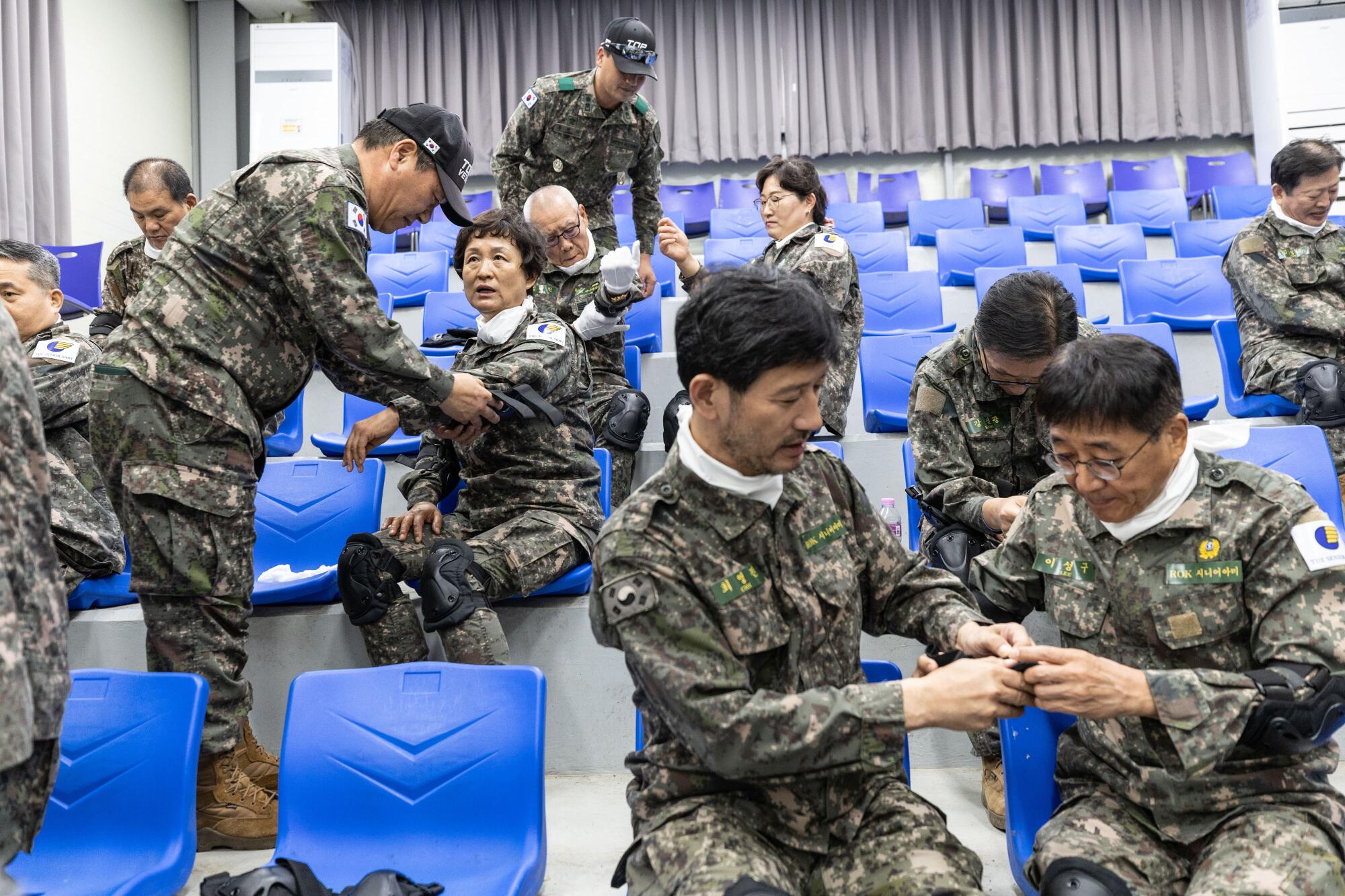
“I’m sorry, but I have to shoot, you’re Team Yellow!” Choi’s killer cried out in a pained voice as he pulled the trigger. The felled teammate headed to the exit, looking crestfallen.
As Team Blue made its way to a resounding victory, the dead gathered to the side. Freed from their team loyalties, they posed for group photographs with their rifles.
“That was a lot of fun,” said a 72-year-old Kim Sung-won of Team Blue, sweating lightly. “I feel pretty confident I could do this in a real-life setting.”
Was it the doting and overattentive manner of the instructors? Or the multiple pleas for the group to please refrain from running?
By the time the Senior Army exited the VR shooting range, which Choi dismissed as “little more than a computer game,” it was clear that, despite having asked for bona fide military training, they had been given a senior citizens’ field trip.
Still, the members spoke seriously about their greater purpose.
“Our generation is one that is especially aware of the population crisis,” Kim Seok-beom said. “Our children are in their 30s, but it seems like 60% of them aren’t getting married or having children. It’s rare to hear about grandkids among my peers.”
Many of them had been inspired by stories like that of the 65-year-old Ukrainian volunteer who had signed up to fight in the war against Russia.
“There is no age or gender when it comes to serving your country,” said Kang, the former machine gunner. “It is true that we may not be able to do very physically demanding things, but we are fully capable of defending our neighborhoods or building fortifications.”
Kim Sung-won, the 72-year-old, agreed.
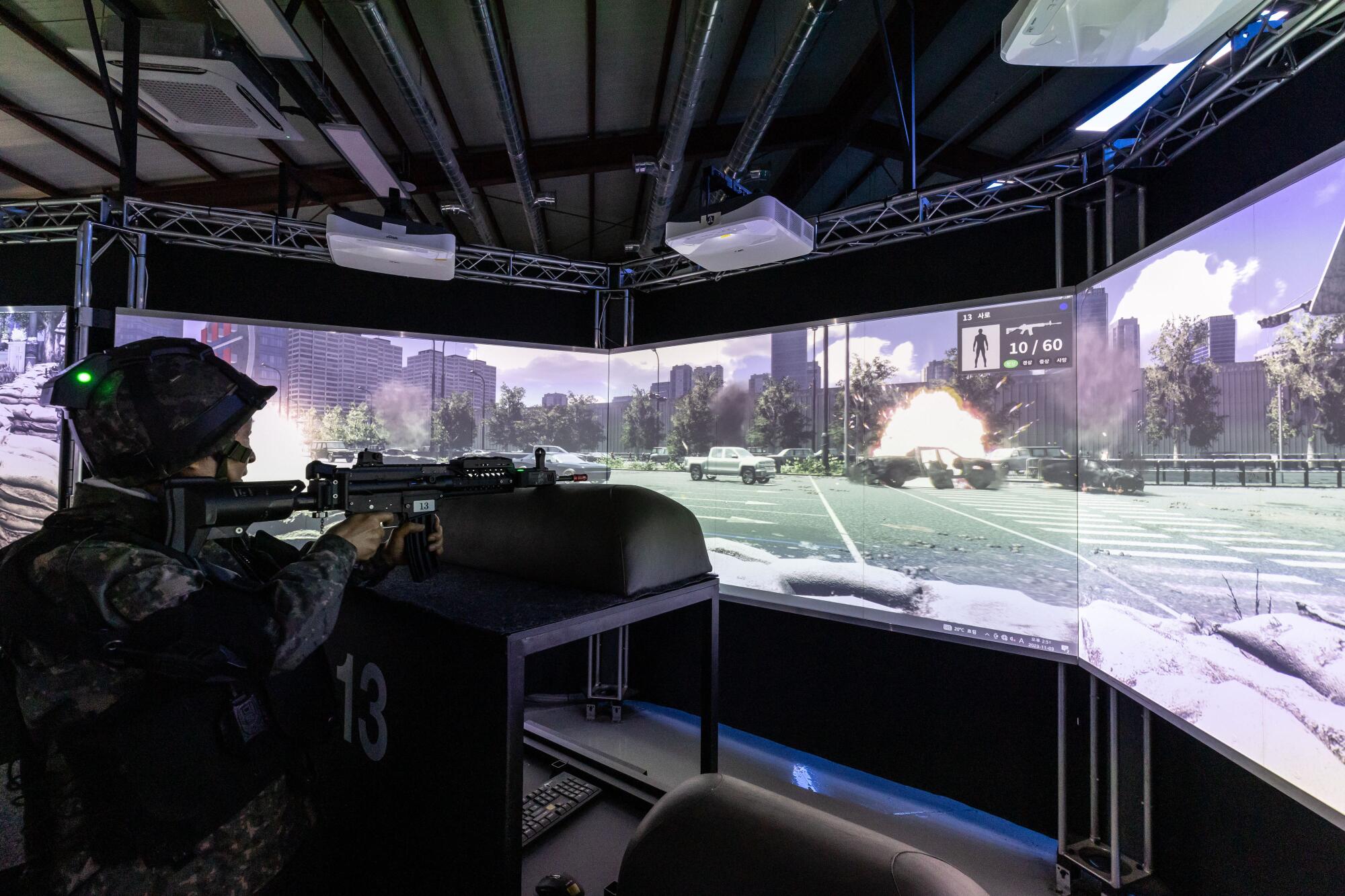
“If there’s a war, of course we’ll volunteer,” he said. “Why else would we be doing this?”
They say it is a sense of civic duty and elderly sacrifice — not militaristic nationalism — that drives them.
“The core idea is that, as our society grows older, we refuse to just lean on the government where there is still something we can contribute to society,” Choi said. “Let the young do their thing, and let us take on some of their burdens.”
He believes that the group can persuade the military to up the ante next year — to give them a training regimen on par with actual reservists, including live-fire shooting.
Separately, they are planning their own 12½-mile ruck march to build up their fitness.
More to Read
Sign up for Essential California
The most important California stories and recommendations in your inbox every morning.
You may occasionally receive promotional content from the Los Angeles Times.



